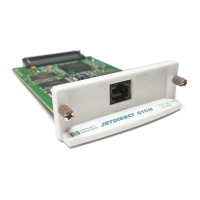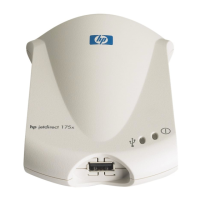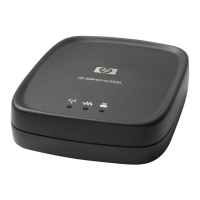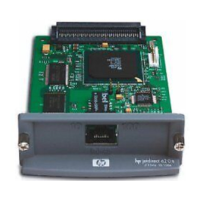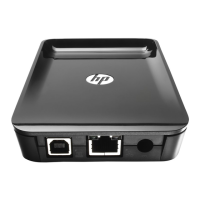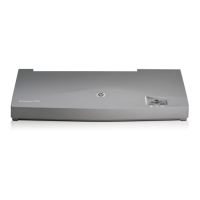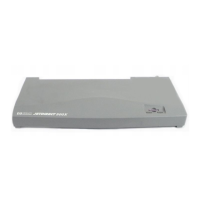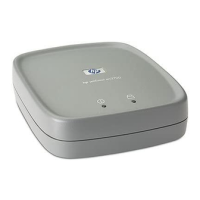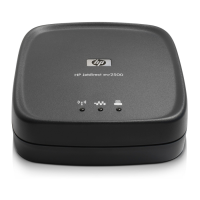IP Address Mask Description
192.1.0.0 255.1.0.0 Allow all hosts on network 192, subnet 1.
192.168.1.2 Allow the host with IP address 192.168.1.2. The mask
255.255.255.255 is assumed and is not required.
To add an entry into the access control list, use the IP Address and Mask fields to specify a host, and
click (check) the Save checkbox for that entry. Then click Apply.
To delete an entry from the list, clear the Save checkbox for that entry. Then click Apply.
To clear the entire access control list, clear all Save checkboxes, and click Apply.
Mgmt. Protocols
This link provides access to management communications and other protocols that affect security.
Web Mgmt.
Use this tab to manage communications with the embedded Web server from Web browsers.
Secure, encrypted Web-based communication is provided through the Secure HTTP (HTTPS) protocol.
If configured to require HTTPS, the embedded Web server routes HTTPS communications through port
443, the well-known port for HTTPS traffic. Although ports 80, 280, or 631 continue for Internet Printing
Protocol (IPP) use, other non-secure communications (HTTP) are redirected to HTTPS. Redirection of
your browser to use HTTPS may be transparent depending on your browser's capabilities.
NOTE: IPP is not supported on value-based print servers.
By factory default, HP Jetdirect print servers and printers with IPsec support are configured to require
HTTPS only.
Although not recommended, HTTPS and HTTP communications that are not secure can be allowed by
clearing the Encrypt All Web Communication checkbox.
To support the use of HTTPS communications, a Jetdirect certificate must be installed. A factory-default,
self-signed certificate is pre-installed for initial use. Click the Configure button to update the pre-installed
certificate, or to install a new one. For more information, see
Configuring Certificates on page 88.
The minimum encryption strength that will be allowed must be specified when using a Jetdirect
certificate. You may select Low (default), Medium, or High encryption strength. For example, selecting
Low will allow medium or high encryption levels to be used whereas selecting High will only allow high
encryption levels.
For each encryption strength, ciphers are specified to identify the weakest cipher allowed.
NOTE: Cipher suites support different levels of encryption strength. The cipher suites currently
supported for encryption and decryption are DES (Data Encryption Standard, 56-bit), RC4 (40-
bit or 128-bit), and 3DES (168-bit).
ENWW Networking Tab 91
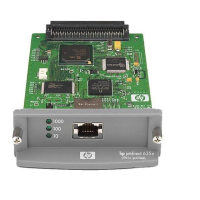
